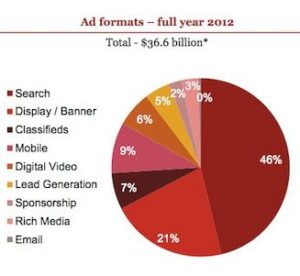
During the week of April 26, 2021, Apple released the new iOS 14.5 software, making the update available to all iOS users. As a result, apps within the App Store are now required to acquire permission to track users’ data across third-party websites and applications. This App Tracking Transparency (ATT) feature gives users the option to consent to or opt out of the collection of their data for advertising or analysis purposes.
Facebook has followed suit with the rollout of new advertiser experiences and requirements known as Aggregated Event Measurement (AEM) for mobile web campaigns. Advertisers on Facebook will notice changes to their marketing campaigns, including targeting and reporting tools, that will affect the kinds of data they are able to collect. Staying up to date with these new developments is key if Facebook ads are a part of your business’s digital marketing strategy.
What to Expect with the Release of iOS 14.5
While the release of iOS 14.5 signifies quite a big shift for a huge audience, it’s important to note that many changes may not be immediately apparent. There will likely be a steady adoption of the new software over many weeks as users update their devices rather than a tsunami of iOS 14.5 users to contend with all at once. Therefore, the influence of this ATT enforcement on iOS event reporting probably won’t be noticeable right off the bat.
That being said, when a user does make the change to iOS 14.5, their device will be opted-out of tracking by default. Upon opening Facebook or Instagram, the apps will detect the update and automatically opt that device out of tracking, which will have a significant impact on marketers.
What to Expect from Facebook’s New Advertiser Experience
The changes to Facebook’s advertising campaign options will be rolled out alongside the iOS 14.5 release and will be noticeable to advertisers right away. Immediate changes include the inability to create Mobile App Install campaigns if your business tool integration does not support Apple’s SKAdNetwork API.
SKAdNetwork helps measure app install campaigns’ conversion rates without divulging the identities of users, which is why it is so important to the enforcement of ATT. There will also be a 72-hour reset period for all active iOS 14 App Event Optimization and Value Optimization campaigns. This is necessary to reduce occurrences of incorrect attribution.
Other immediate changes to both app and web reporting include the following:
- Modeling of 1-day click-through opt-out data
- Elimination of opted-out events from 7-day click-through and 1-day view-through attribution settings
- End of support for action and demographic breakdowns for offsite events
- Change of attribution setting default to 7-day click-through for the creation of new ad sets and web event campaigns
- Shift from Impression Time to Conversion Time for attribution methodology
Campaigns using web events may experience a more gradual rollout. While Facebook’s AEM can be expected to be fully implemented over the span of two weeks, unexpected issues may certainly arise that could extend this introductory period.
Looking Ahead as a Digital Marketer
As an advertiser who relies on Facebook marketing, you can expect to experience fluctuations in the performance of your campaigns and increased CPAs. Advertisers will likely observe these variations. While the impact on delivery and reporting will occur as the adoption of iOS 14.5 becomes more widespread.
The end result, and something we should all be planning for, is that audience sizes could decrease. Opted-out iOS 14.5 users will be automatically excluded from certain target audiences, and adjustments will need to be made to the way you target as a result.
Other things to look out for with Facebooks’ new AEM experience include:
- Limit of 8 events per domain
- Pausing of ad sets that are optimized for events not configured for AEM
- Pausing of ads that have failed to select a domain for tracking
- 72-hour pause following the modification of web event configurations
This new advertising ecosystem is sure to bring about other unforeseen changes, and many of them will have positive ramifications. Thanks to these changes, organizations and Internet users can move forward in building trust-filled relationships that promote a sustainable online environment in which both businesses and individuals feel secure.


